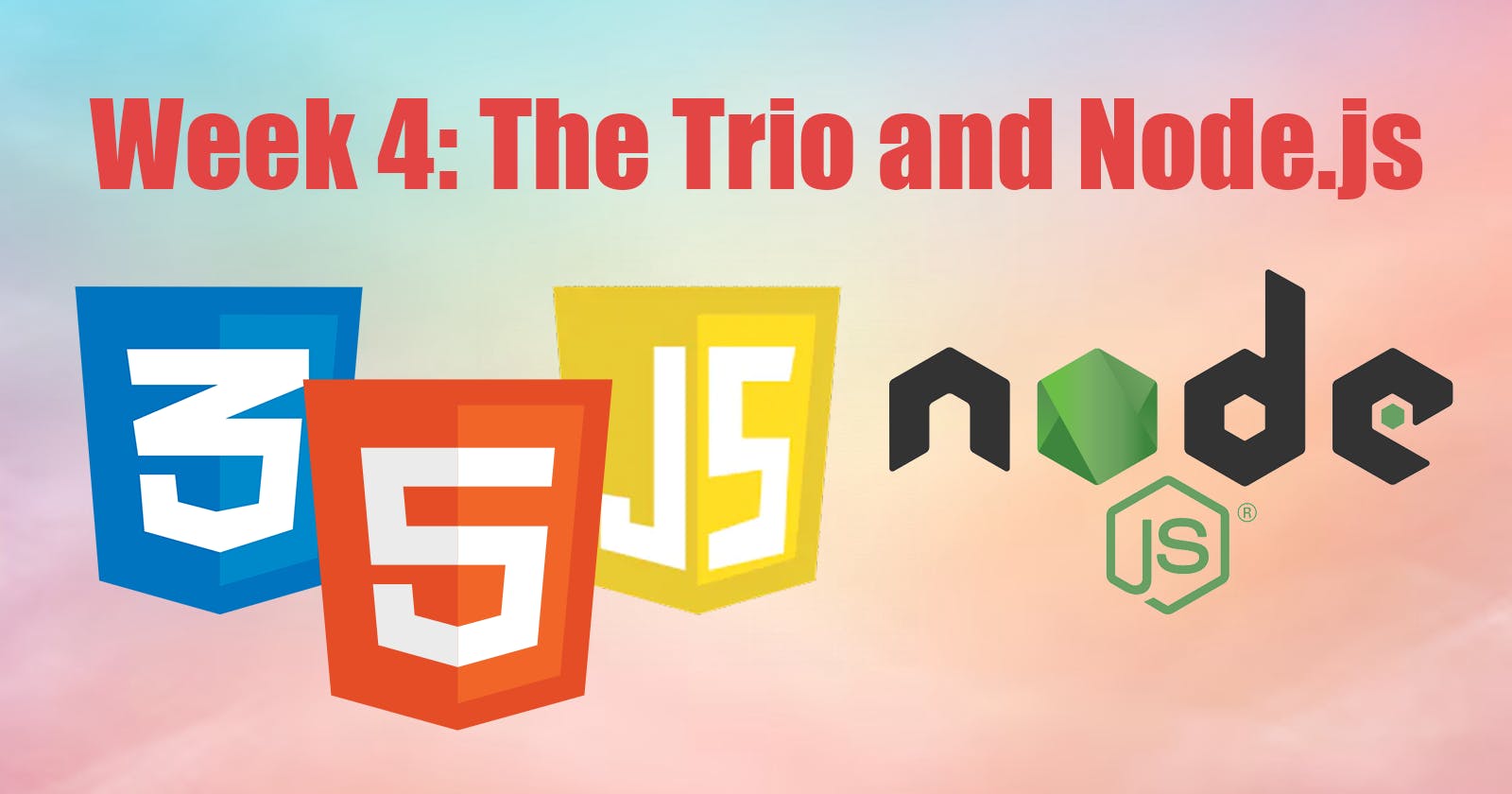Welcome back to Codebrew Time, where every sip of code is brewed with the essence of simplicity and the essence of innovation. Today, we're diving into the foundational pillars of web development—HTML, CSS, and JavaScript—and how these languages serve as the ideal starting point for aspiring coders. Plus, we're shedding light on our exciting transition to Node.js, setting the stage for an enriched coding journey. So, refill your coffee, and let's unravel the magic behind these languages and what lies ahead with Node.js.
The Trio That Powers the Web
HTML: The Structure of the Web
Imagine building a house without a blueprint—it wouldn't stand a chance. HTML (HyperText Markup Language) plays a similar role in web development. It's not just a programming language; it's the skeleton that gives structure to web pages. For beginners, HTML is the doorway to understanding the web's anatomy, teaching the importance of structure before diving into complexity. It's straightforward, widely used, and provides instant gratification—seeing your code transform into a webpage is nothing short of magical.
CSS: The Stylist of the Web
If HTML is the structure, CSS (Cascading Style Sheets) is what makes that structure aesthetically pleasing. It's the language that dresses websites in colors, layouts, and fonts, transforming them from plain text documents to visually engaging pages. For beginners, CSS is a canvas for creativity, allowing you to experiment and see immediate results. It teaches the art of design alongside the science of coding, a crucial skill in a world where user experience reigns supreme.
JavaScript: Bringing the Web to Life
While HTML and CSS can create beautiful, static web pages, JavaScript breathes life into them. It's the programming language that enables interactivity, from responding to user actions to fetching data without reloading the page. JavaScript opens the door to modern web development practices and frameworks, making it an essential skill for any aspiring web developer. For beginners, it introduces programming fundamentals in a context that's visible and interactive, making learning both engaging and practical.
Transition to Node.js: Expanding Horizons
As we journey through HTML, CSS, and JavaScript, we're not just building a foundation; we're preparing for the next leap—Node.js. Node.js is a runtime environment that allows you to use JavaScript on the server side, breaking free from the confines of the browser. This transition marks a significant milestone in our coding odyssey, offering a glimpse into full-stack development.
What We'll Learn with Node.js:
Server-Side JavaScript: Understanding how to run JavaScript on a server, opening up possibilities for building web applications, APIs, and more.
Asynchronous Programming: Mastering the non-blocking nature of Node.js, which is crucial for creating efficient, scalable applications.
Express.js: Diving into one of the most popular frameworks for Node.js, making web application development faster and easier.
Database Integration: Learning how to connect your Node.js applications with databases, an essential skill for any full-stack developer.
Building RESTful APIs: Understanding how to create APIs that let your applications communicate with other software, a key component of modern web services.
Conclusion: A Journey of a Thousand Codes Begins with a Single Line
Starting with HTML, CSS, and JavaScript offers a holistic introduction to web development, blending structure, style, and interactivity. These languages not only equip beginners with the skills to create web pages but also lay the groundwork for advanced topics like Node.js. As we transition to Node.js, we're not just learning a new technology; we're stepping into the realm of full-stack development, ready to explore the depths of both client and server-side programming.
So, as we continue our journey at Codebrew Time, remember that every line of code is a step towards mastery. Embrace the process, experiment with ideas, and let your curiosity lead the way. With HTML, CSS, JavaScript, and soon Node.js in your arsenal, the digital realm is yours to conquer.
Stay tuned for our next adventure into Node.js, and don't forget to like, subscribe, and share your coding triumphs in the comments below. Together, we're not just coding; we're crafting the future, one line at a time. Happy coding!

